SIFPD Declines Water Tank Offer, Focuses on New Fire Stations and 2026 Tax Measure
At the most recent meeting of the Southern Inyo Fire Protection District (SIFPD), the board turned down a proposal from local landowner Jon Zellhoefer, who had offered the district use of a water tank located on his property—currently listed for sale at $50 million. “Thank you, no thank you,” board chairperson Robin Flinchum said plainly.
The board’s rationale was straightforward: because the property is on the market, Zellhoefer cannot offer a lasting easement that would guarantee SIFPD future access to the tank. Without a secure long-term agreement, the board concluded the arrangement would pose too much risk. Instead, SIFPD will invest in developing a well on property it controls, ensuring permanent district access to water—an essential resource for firefighting in the region’s arid climate.
In parallel, the board is considering placing a SIFPD tax measure on the 2026 general election ballot to support its growing infrastructure needs. A vote on whether to proceed was delayed until next month, allowing more time to gather information and fine-tune the proposal. “We are probably going to only get one shot at this,” said board treasurer Colette Zelwer, emphasizing the importance of getting the numbers right. She noted that a 2026 ballot initiative would not only align with higher voter turnout but would also cost the district significantly less than a standalone measure in 2025. State law requires at least 90 days’ advance notice to place such a measure on the ballot.
A key factor informing the potential ballot measure is the estimated cost of building two new fire stations—one in Charleston View and another in Tecopa—which is projected to run between $500,000 and $800,000 with some of the cost covered by grants. However, no final decisions have been made about the specific needs or configurations of the new facilities.
The board has been reviewing site requirement proposals submitted by local hospitality entrepreneur Cynthia Kienitz on behalf of the board. A few meetings ago, Kienitz was scheduled to present her recommendations in person, but instead bypassed the meeting agenda and submitted preferences directly to Inyo County. The SIFPD board has put those suggestions on hold and has since been reviewing the recommendations and plans to submit their final selections to the county once consensus is reached.
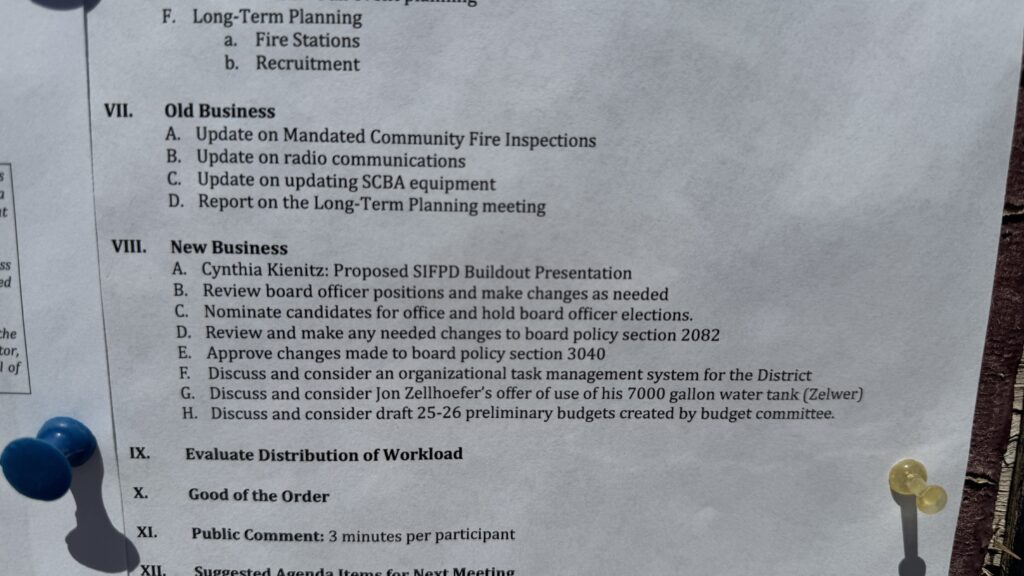
The SIFPD board has also deputized environmental advocate Patrick Donnelly of the Center for Biological Diversity to lead negotiations on a potential community benefits agreement (CBA) with the developers of a solar project in Charleston View. Donnelly, a longtime defender of the Mojave’s fragile ecosystems, will represent the district’s interests in discussions aimed at securing tangible benefits for local residents—such as fire protection funding, infrastructure improvements, and environmental safeguards. The board expressed confidence in Donnelly’s ability to help ensure the project delivers more than just energy to the grid.
As the district balances water access, capital investments, and long-term funding strategies, the tone at the meeting reflected both urgency and deliberation. With infrastructure gaps to fill and only one likely opportunity to pass a new tax, board members are taking care to make decisions that will stand up to community scrutiny and meet the district’s growing demands.
The next board meeting will be held August 21, 2025 and will be available on Zoom. SIFPD Meetings are held every third Thursday at the Tecopa Community Center for regular board business and every first Tuesday to discuss the water kiosk. Kiosk meetings now also take place at the Community Center, making it more accessible for residents to attend. The board is also exploring a return to holding regular meetings in Charleston View to better serve the broader community.
Community Debates Future of Tecopa Hot Springs Amid Uncertainty
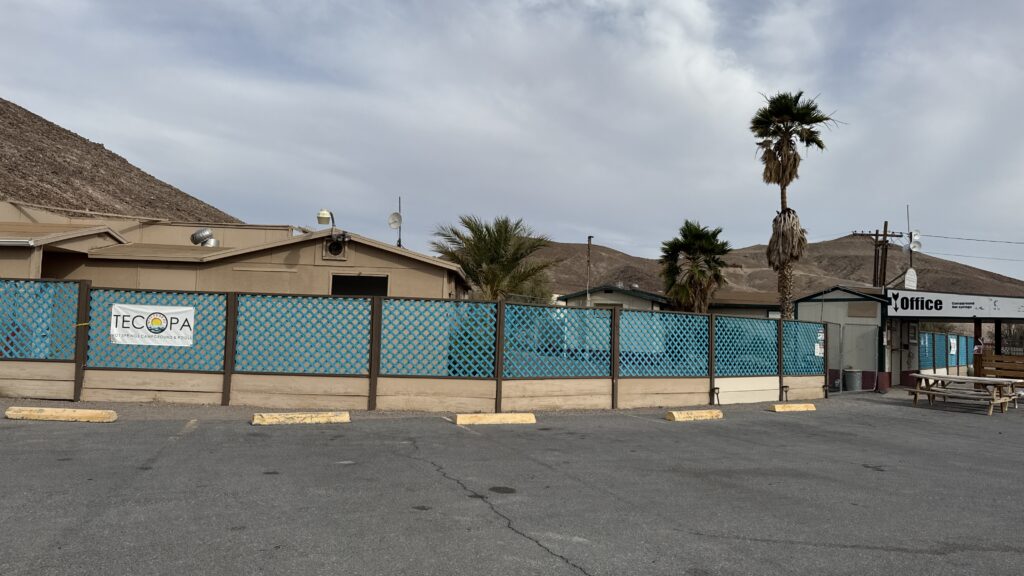
A lively community discussion has emerged around the uncertain future of the Tecopa Hot Springs Campground and Pools, with many residents urging Inyo County to resume direct operation if no concessionaire is selected by the county’s deadline of September 26, 2025.
There was some speculation that four groups were in the running: the McNeill family of Delight’s Hot Springs, Cynthia Kienitz of Cynthia’s Safaris, Lance and Vanessa Hamrick, and a group of unnamed Koreans—though the latter reportedly left halfway through the site tour during the recent bidder’s conference held by Inyo County.
Emotions are running high as locals rally around the springs, which many see as the cultural and economic heart of the town.
A letter from one local resident to Supervisor Will Wadleton, which has been widely circulated in the community, captures the urgency and emotional weight of the moment:
“I have been losing a lot of sleep over the loss, or potential loss of the hot springs. As I lay here at 2am this morning, it occurred to me that we built a home here precisely because there was an accessible hot springs. Most people have homes here to be near the hot springs. The Kit Fox and DV Brewery have businesses because of the hot springs. When we arrived here they were open and free for that matter, and had been for MANY years prior to our arrival. So basically it was understood by all that they had been operated by the County. I’m getting to a point here, bear with me.
My point: there has been an understanding and social contract in place for at least a half a century or more. It was reasonable to assume that there would be accessible hot springs for residents and visitors for the foreseeable future. If no respondents to RFP come forward, that leaves the County. If they don’t keep it open, to my way of thinking, they are in violation of their obligation, or at least the social contract. So many of us spent life savings creating homes and residences, businesses and lives here that would be decimated by no hot springs. Our house with hot springs open would probably sell for 4 to 5 times what it would without. The only tool we have is our VOTE and our influence. We want Inyo County to have a backup plan to keep the place open, it is vital to the health and happiness of our community. A thriving community is great for everyone. Will, please take this to heart because honestly we are not going to shut up and go quietly!”
Should no concessionaire be secured, the Inyo County Code of Ordinances suggests the County is obligated to operate the Tecopa Hot Springs Park—not as a discretionary service, but as a public duty embedded in its own regulations. “The operation and maintenance of all county parks and campgrounds shall be under the control of the director, subject to the supervision of the board of supervisors.” In a subsection dedicated to Tecopa Hot Springs Campground and Pools, the ordinance states “at the termination or cancellation of any [concessionaire] agreement, the fees for the use of the campground, baths, and other facilities at the Tecopa Hot Springs Park, the rules of conduct for the use of those facilities, and all other relevant provisions of this chapter shall apply to, and be observed and enforced at, the Tecopa Hot Springs Park.”
Supporters of a community-led solution have proposed that volunteers staff the kiosk and maintain the facilities if the county were to step in. Ross, owner of Tecopa Mines, added:
“I’ve worked shifts there before the kiosk, and I’ve enjoyed the interaction with the visitors. I’d volunteer to regularly pick up one of those shifts to help keep the place open. Also, maybe we need to look at using some of that space at the campground to put in some amenities the community needs. That would also support visitors: a small store, a laundromat, a restaurant, even a decent no-frills bar where everyone is welcome… We’re only an hour and a half out of Las Vegas, and an hour out of Pahrump. Maybe we need to expand more and give the people there reasons to come and spend money other than a 30-minute soak.”
Someone else emphasized the need to frame the issue in terms of economic development, pointing out that the County is more likely to respond to arguments about tourism revenue and long-term fiscal sustainability than emotional appeals alone. They suggested organizing a formal volunteer roster, outlining schedules and responsibilities, and identifying required supplies to help demonstrate a viable path forward.
Others urged caution, citing the logistical and legal realities of such a plan — including insurance, supply costs, equipment needs, and management oversight. One longtime contributor warned that good intentions alone wouldn’t be enough. Without leadership, clear structure, and financial backing, the County is unlikely to relax its operational standards.
Meanwhile, on a recent Saturday night, Dan Leseberg of Death Valley Brewing quietly added several attendees from the bidder’s conference to the locals-only “Happyville” thread on Facebook — including Vanessa Hamrick, Kandy Flippin, and Lance Hamrick — a subtle but telling sign of shifting dynamics as outside interest in the springs increases.
Despite differing perspectives, the consensus remains clear: Tecopa’s hot springs are essential — to residents’ lives, to local business, and to the soul of the community. As one commenter put it, “This is not going to happen because we want it to. It’s going to take real sacrifice — time, money, and leadership and a solid, unified plan.”
On one point, there was quiet consensus: Supervisor Will Wadelton would not be receiving an invitation to the long-running locals-only message thread. He’s a politician now.
Dispute Erupts Over Nighttime Digging at Tecopa’s Miner’s Tub
A late-night restoration effort at the local hot spring known as the Miner’s Tub on Bureau of Land Management land in Tecopa has sparked a heated exchange between local residents over environmental concerns and legal risks.
One community member raised alarm over recent digging activity near the hot spring, warning that disturbing the area could threaten the endangered niterwort plant and potentially violate state and federal environmental laws—offenses that could carry criminal penalties.
The individual conducting the digging defended the work, stating that the effort was focused on clearing and restoring a long-neglected spring box to improve water flow and temperature at the historic tub. “The spring box has not been properly maintained since around 1994,” they wrote, adding that the work included removing rusty pipes, cleaning out waste, and replacing old infrastructure. As for working at night, they noted, “Yes, it is summertime.”
The exchange highlights ongoing tensions in Tecopa around stewardship of public lands, historic use sites, and environmental preservation in the delicate desert ecosystem.
In the Salt and Sunrise: Counting the Endangered Amargosa Niterwort at Tecopa Hot Springs
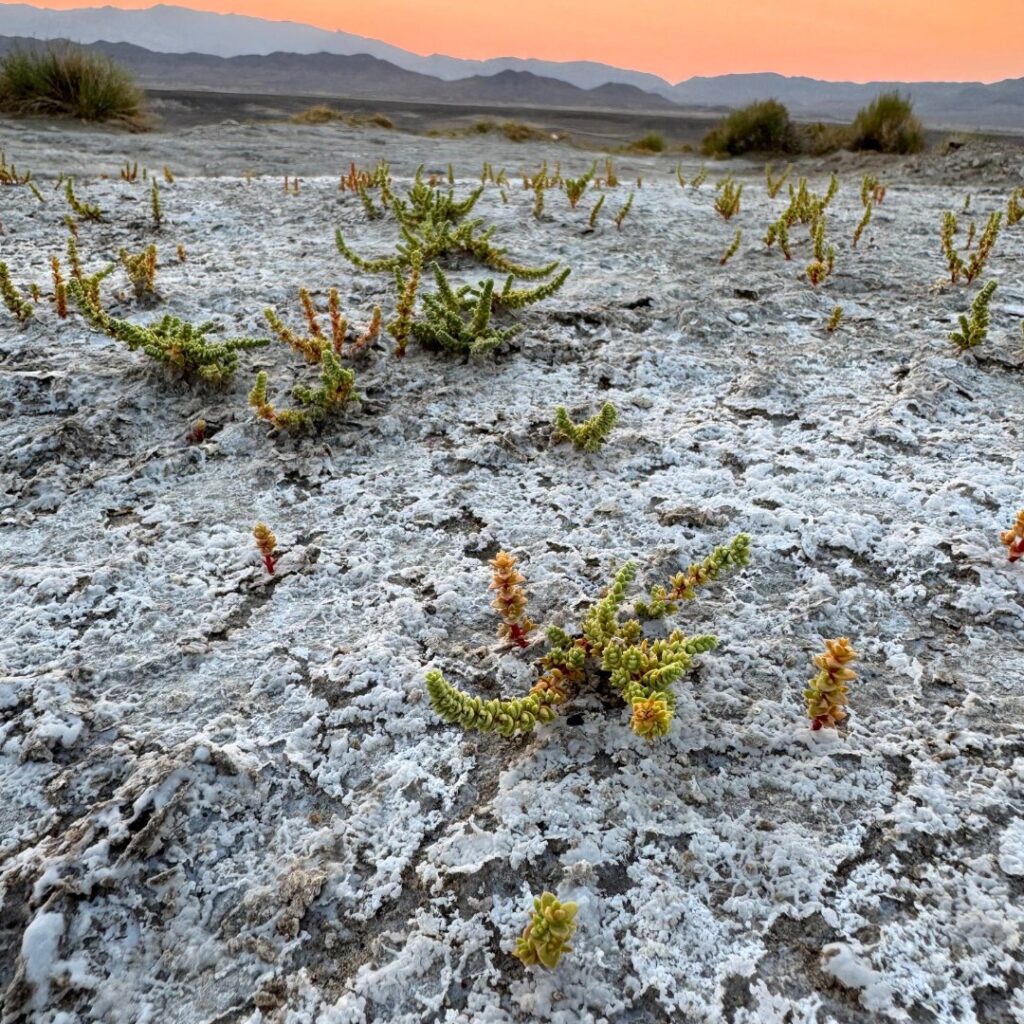
At daybreak last week, the Amargosa Conservancy joined botanists from the California Botanic Garden in an act of quiet urgency: counting the Amargosa Niterwort, a rare, ground-hugging wildflower that blooms in the alkaline wetlands of the Mojave.
The team ventured into the glinting salt flats surrounding Tecopa Hot Springs, where the niterwort pushes improbably through a brittle crust of salt, often emerging atop delicate mounds fed by shallow groundwater. It is in these microcosms—mineral-rich, parched, yet persistently alive—that the endangered Nitrophila mohavensis stages its modest rebellion against extinction.
“To crouch among the salt and study these plants is to witness survival in its most precise form,” the Amargosa Conservancy shared in a recent update. “You start to understand the incredible adaptations it takes to live here: extreme salt tolerance, roots deep enough to tap into the water table, and a quiet resilience that matches the desert itself.”
Endemic to the Amargosa River basin, the niterwort is known only to a handful of populations near Tecopa, California, and Ash Meadows National Wildlife Refuge across the state line in Nevada. It thrives nowhere else. As climate change, groundwater pumping, and development inch closer to its narrow habitat, scientists and conservationists are racing to understand not only how many individuals remain—but how they reproduce, survive, and might persist into the future.
One lingering mystery? Pollination. While no definitive research has identified the Amargosa Niterwort’s primary pollinator, some scientists speculate that ants—unassuming desert laborers—may play a vital role. For now, that question remains unanswered. And that uncertainty makes every plant counted, every square meter surveyed, a small act of defense against what could be lost.
The Amargosa Niterwort is federally listed as endangered. Its dependence on shallow groundwater and intact alkaline wetlands places it at particular risk, especially as the region faces increasing pressure from agriculture, mining, and renewable energy development. The surveys conducted last week form part of a long-term monitoring effort critical to shaping conservation strategies and land-use decisions in the fragile Amargosa watershed.
Tecopa locals, long familiar with the beauty and brutality of their landscape, now find themselves stewards of a species that exists nowhere else on Earth. The quiet work of counting niterwort may seem small, but in a desert where life is built on scarcity and balance, it is a gesture of profound responsibility.
As the sun rose over the eastern horizon and the salt flats lit up with pink and gold, the team bent close to the crusted ground. Each tiny bloom, no larger than a fingernail, glowed against the white—a brief, brilliant sign of life, waiting to be seen.
Lawsuit Seeks Endangered Species Protections for Rare Desert Wildflower
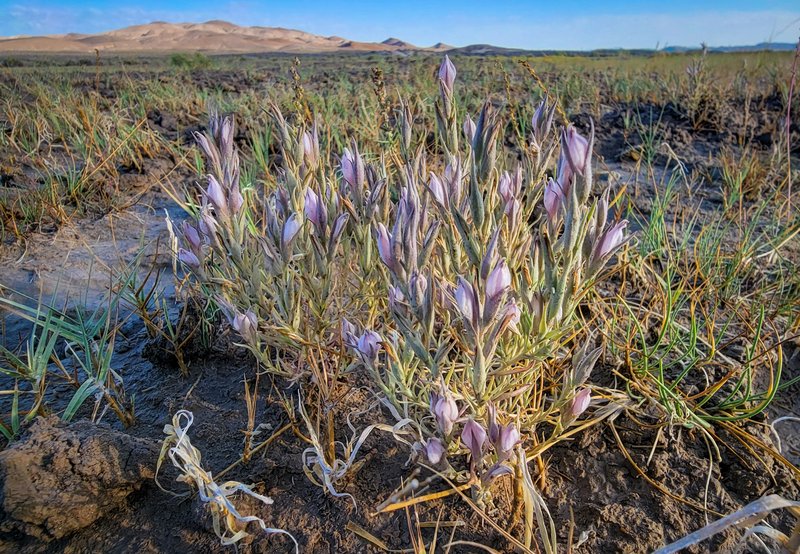
A conservation group has filed a federal lawsuit against the U.S. Fish and Wildlife Service for delaying a decision on whether to grant Endangered Species Act protections to the Tecopa bird’s beak, a rare desert wildflower found only in parts of California and Nevada.
The Center for Biological Diversity filed the suit July 1 in U.S. District Court in Las Vegas, arguing that the agency failed to meet a legal deadline after initiating a review in October 2024. The wildflower, which depends on groundwater-fed alkali wetlands, is threatened by water extraction, agriculture, mining, off-road vehicles, and climate change.
The Tecopa bird’s beak grows in three known locations: Fish Lake Valley in Nevada and two sites in the Amargosa River Basin — Ash Meadows National Wildlife Refuge and near the town of Tecopa, California.
The plaintiffs include botanist Peri Lee Pipkin, who coauthored the 2024 petition and conducted field research expanding knowledge of the species’ habitat and range.
The lawsuit argues that timely listing is critical to prevent further decline. The Fish and Wildlife Service has not yet commented on the case.
Tecopa Mines Revives Historic Equipment in Push to Reclaim Mining Roots
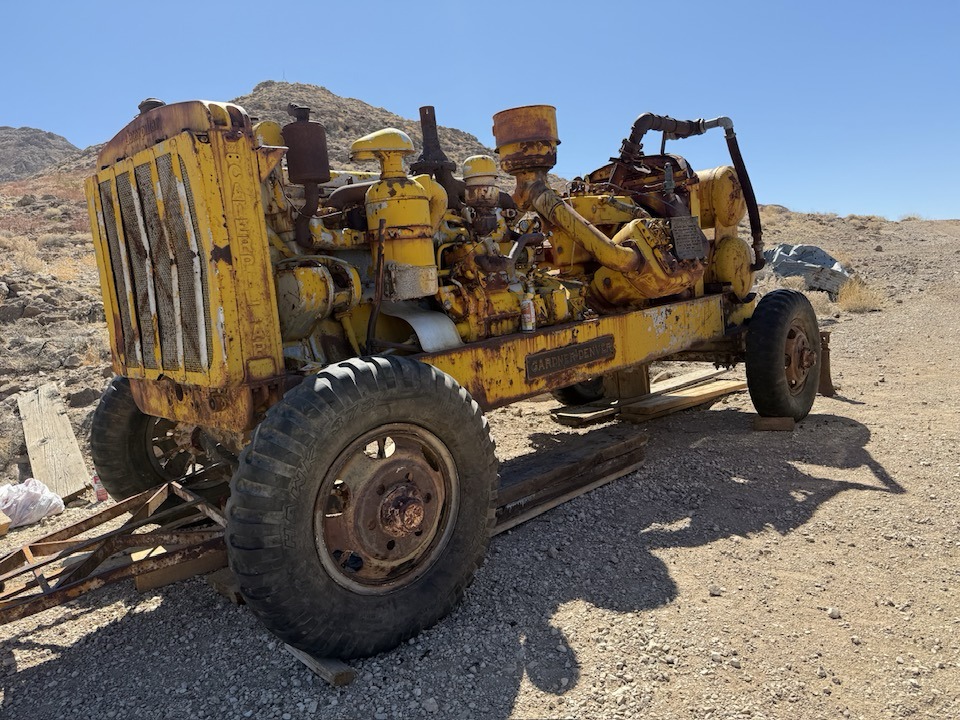
Earlier this month, Ross, the owner of Tecopa Mines, shared an update on Facebook about ongoing efforts to restore Tecopa’s historic mining legacy. He announced that the 1949 compressor—originally from the Shoshone Historical Museum—has been successfully re-mounted with new tires, thanks to help from community members Max Berry, Tony, Marcie, and Paul Carter. Although the restoration has taken time due to its complexity, Ross reported that the equipment is now physically restored and the next goal is to get it running. The effort is part of a broader mission to restore the historical site and expand their offerings for mine tours as a central part of Tecopa’s tourism identity.
BLM Approves Clinoptilolite Exploration Project in Inyo County
The Bureau of Land Management (BLM) has approved a mining exploration project proposed by St. Cloud Mining Company in eastern Inyo County. The exploration activity will take place adjacent to the company’s existing mine within the Amargosa North Area of Critical Environmental Concern (ACEC), an area recognized for its unique ecological and cultural resources.
The approved project permits St. Cloud Mining to drill up to 43 exploratory holes on public lands near Death Valley Junction. The operation is expected to result in less than one acre of surface disturbance.
The project focuses on locating deposits of clinoptilolite, a naturally occurring mineral in the zeolite family. Clinoptilolite is used across various industries for its absorbent properties—commonly employed to manage moisture, capture odors, and neutralize contaminants in agricultural, environmental, and industrial applications.
According to BLM officials, the approval process considered the limited scope of surface disturbance and the project’s consistency with federal directives promoting domestic mineral development.
St. Cloud’s exploration aligns with federal policies intended to bolster mineral self-sufficiency in the United States. The project is one of several across the West aimed at strengthening domestic mineral supply chains and supporting economic activity in rural regions.
The Barstow Field Office is overseeing the permitting and compliance process, including monitoring any impacts to the surrounding area.
Charleston View Property Reclaimed by New Owners, Cleanup and Community Revival Underway
A long-troubled property at 174 Mabel Lane in Charleston View is entering a new chapter of stewardship and rehabilitation following its official sale to longtime local residents Nicholas and Radhesyam (Rad) Soviak. In a detailed public notice shared with the community, the Soviaks laid out both the legal clarity of their ownership and their vision for restoring the land after years of disorder, neglect, and community concern.
The property, once occupied by local character Sean Jones, became the site of escalating chaos after his death. Following a brief residency by his sister Holly, the land saw frequent disturbances, including reported gunfire, thefts, and multiple visits from Inyo County Sheriff deputies. While rumors swirled and opportunists circled, few knew that Sean Jones was never the legal owner. The property, in fact, belonged to his mother and was passed down to another of her daughters, Heather, upon her death. After Holly’s incarceration, Heather took steps to condemn the deteriorated housing on-site.
In their notice, the Soviaks emphasized the legitimacy of their purchase, including all personal property and vehicles associated with the parcel. “We knew who was holding the titles for Sean’s vehicles… something most would-be thieves didn’t know existed,” they stated. They also issued a strong warning to would-be trespassers: the site is now monitored by hidden 24/7 live-stream security cameras, and legal action will be taken against anyone found on the property without permission. “That’s NOT an idle threat… I mean business,” said Nicholas, noting a strong litigation record and backing from local law enforcement.
Beyond the legal assertion, the Soviaks made clear that their intent is not just protective, but restorative. “We don’t need this property—we already have two lots with water—but we bought it because it had become such a public nuisance. It’s a price we’re willing to pay, with money and a lot of sweat, to get it up to county code.”
Immediate plans include the removal of vehicles currently obstructing the road, a hazard for emergency access. The Soviaks have also announced their intention to bring a car crusher to the area—a resource they hope other local property owners might take advantage of. “If you have unwanted scrap vehicles, we may be able to arrange removal or crushing on-site,” they offered.
Longer-term goals include working with Inyo County to secure permits for the demolition of unpermitted structures and eventually grading the property to restore its natural state. “Lord knows we have our work cut out for us,” the Soviaks said. “But we are certainly open to assistance from well-intentioned, community-minded folks who want to make this area a nice, quiet place to live.”
Residents with questions or interest in vehicle removal can direct message or contact the Soviaks directly. Any reports of trespassing should be made immediately to the Inyo County Sheriff.
The couple closed their message with thanks to all who supported the transition and pledged to move forward as active and respectful neighbors: “We look forward to serving this community as your friends and neighbors.”
Surprise Storm Soaks Tecopa, Leaves Roads Flooded
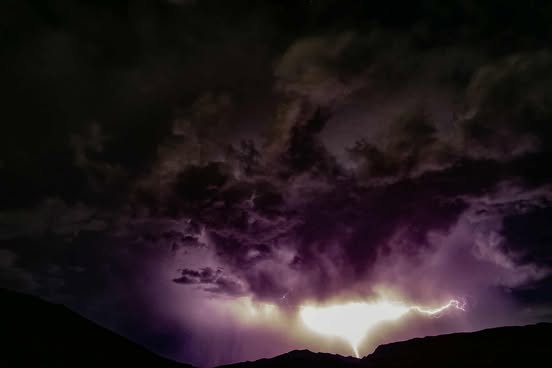
A sudden storm brought heavy rain and thunderstorms to the Tecopa area in early July, catching residents off guard and leaving visible signs of flooding throughout the community.
The National Weather Service in Las Vegas issued the alert at 9:16 PM PDT on July 2, warning that a severe thunderstorm was located over Tecopa and moving north at about 15 mph, with the potential for 60 mph wind gusts and quarter-size hail. The warning—active until 10:00 PM PDT—included both Tecopa and Shoshone in southeastern Inyo County. Residents were urged to move to interior rooms on the lowest floor and to avoid driving through flooded roadways, with meteorologists cautioning that torrential rainfall could rapidly lead to flash flooding.
“Best light show I’ve seen in a good long time,” one resident wrote on Facebook.
The local weather station recorded 0.45 inches of rain in a single hour—an unusually high amount for the typically arid region. In nearby Shoshone, where the storm appeared more bluster than substance, some questioned the accuracy of the reading, noting that the ground there remained mostly dry by morning. Given that even a tenth of an inch can cause minor flooding in Tecopa, nearly half an inch in an hour would be expected to leave a mark.
And it did. Residents reported standing water on roads and localized flooding, with one saying Bob White Way, a commonly problematic street was, once again, overwhelmed by runoff. Another noted flooding on highway 127 near Dumont Dunes.
Others noted the storm brought a brief but intense burst of rain and hail, followed by a tapering drizzle. Makeshift rain gauges—like a backyard bucket—suggested totals of a couple inches in some spots.
Tecopa sits in a landscape of dry washes, compacted soils, and patchy drainage infrastructure. When rain falls fast, it can’t soak in quickly; instead, it runs off, filling ruts, flooding low crossings, and depositing sediment across dirt and paved roads alike. Even small storms can disrupt traffic or strand vehicles. When hail and high winds ride in with the rain, the risk to vehicles, roofs, and trees rises sharply—as the NWS warned.
The storm, though short-lived, served as a stark reminder of the region’s vulnerability to flash flooding during sudden downpours. As the desert heads into its monsoon season, local observers say this storm is a clear signal to stay alert—and to never underestimate the power of a passing summer cell.

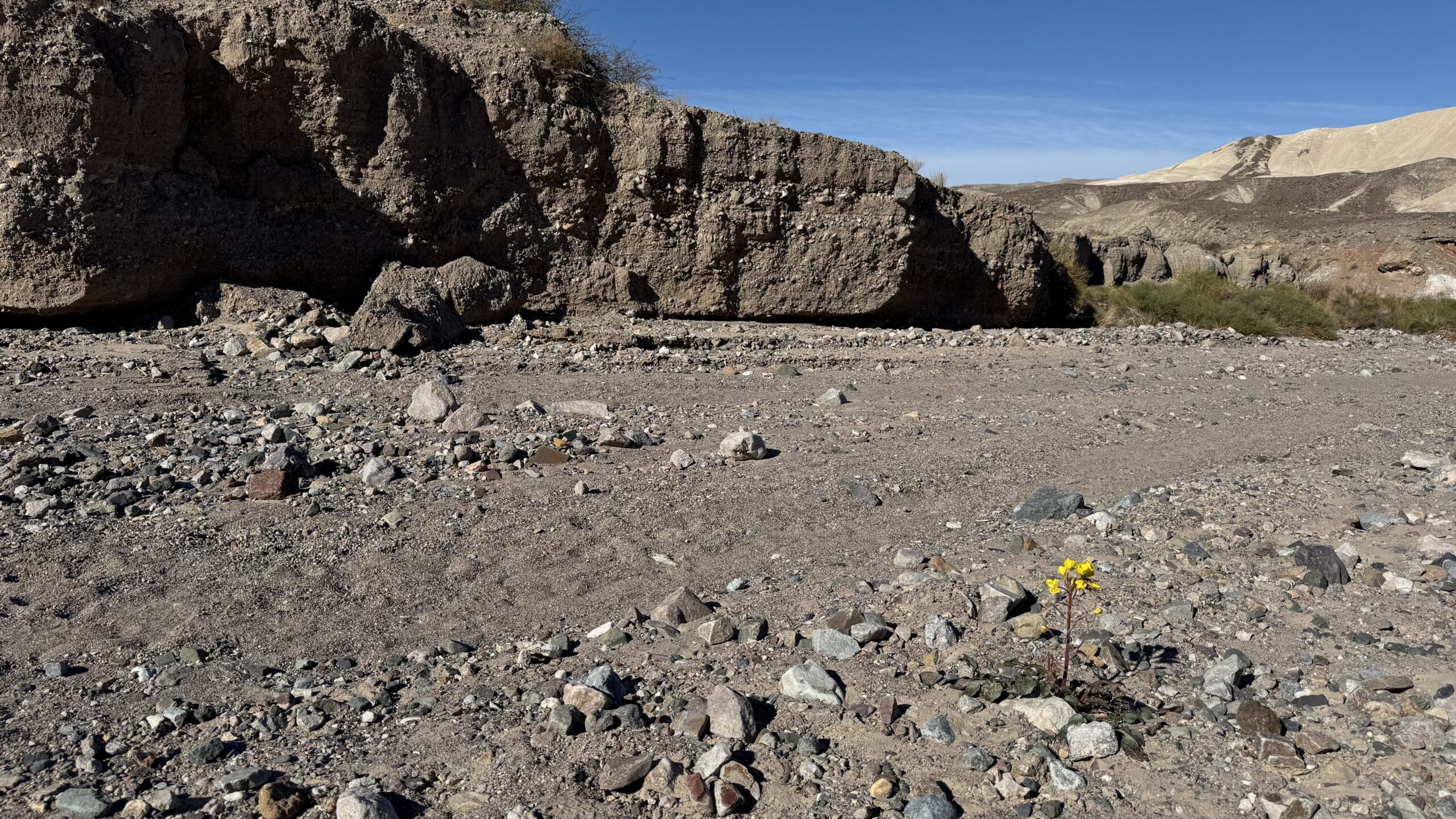
Leave a Reply